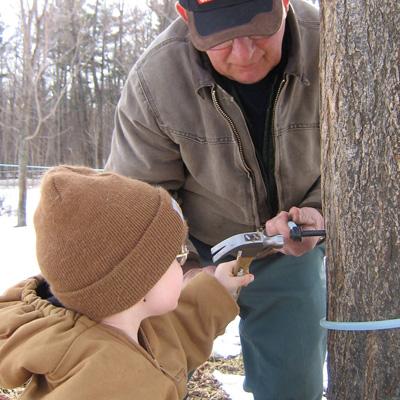Evaluating the Growth Potential of the Maple Industry in the Northern Forest

Maple sugar production is a sustainable use of the Northern Forest that provides annual income while allowing for the ecological advantages of forest cover. Using U.S. Forest Service Forest Inventory Analysis data for sugar and red maple, NSRC researchers determined that the maple resource in this region is substantially underused at present and compared with historic use. Re-developing the maple sugar industry would increase the economic value of the forest and provide jobs in rural areas of the Northern Forest.
On average, 1.1% of potentially tappable maple trees are currently tapped for syrup production across the four Northern Forest states. Researchers identified areas with greatest potential to increase production and are developing more realistic estimates of the potentially tappable maple resource to include accessibility, density, and spatial distribution factors.
A survey of 1100 landowners and maple producers identified barriers and incentives for expansion of maple businesses. Common barriers included not having the time, interest, or ability to tap trees and process sap. However, there is a strong interest in leasing trees or selling sap to overcome these barriers. Large landowners are concerned about reduced sawtimber value and not being able to determine the economic consequences of tapping vs. timber production. Researchers developed a Net Present Value (NPV) calculator that allows foresters and landowners to determine if they could earn more money by leasing a maple tree for syrup production or harvesting it for sawtimber production. The Excel-based calculator is available at http://maple.dnr.cornell.edu/produc/tvs/index.htm.
Download printable version [PDF]
Download full final report [PDF]
